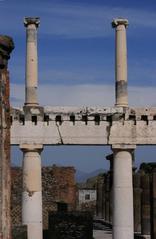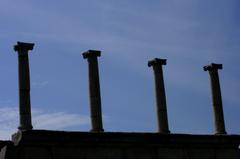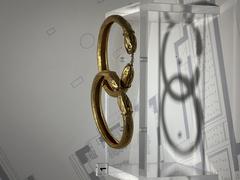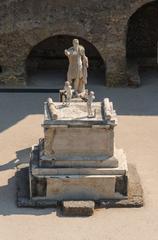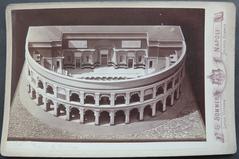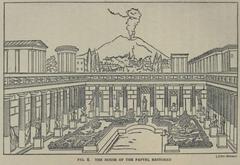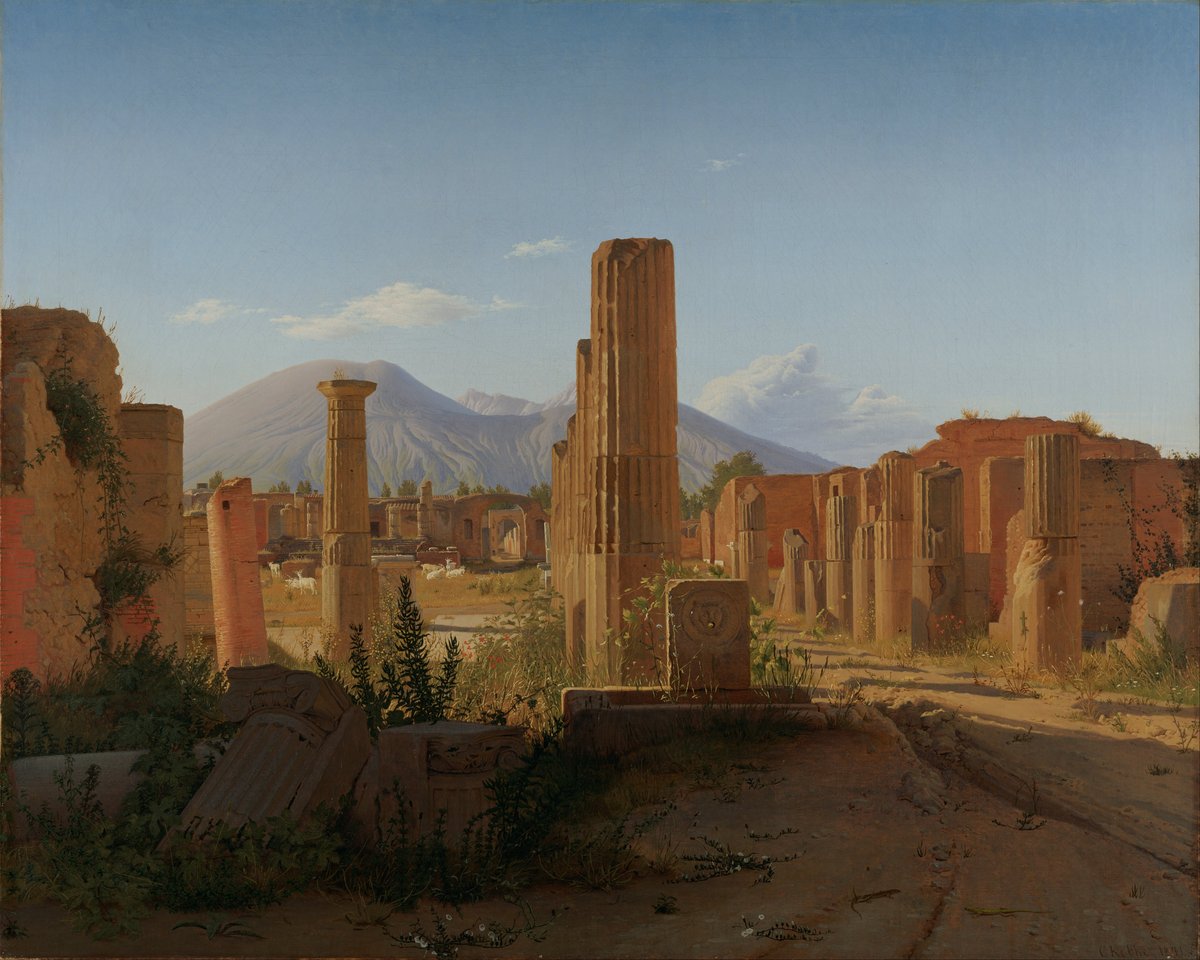
Comprehensive Guide to Visiting Scavi Archeologici di Pompei and Herculaneum
Date: 18/07/2024
Introduction
Pompeii and Herculaneum, located in the Campania region of Italy, are among the most extraordinary archaeological sites in the world. These ancient Roman cities were both tragically buried by the catastrophic eruption of Mount Vesuvius in 79 AD, preserving a moment in time with unparalleled detail. For centuries, these cities lay hidden beneath volcanic ash and debris, only to be rediscovered in the 18th century, providing an invaluable glimpse into Roman life. Today, they are celebrated as UNESCO World Heritage Sites and attract millions of visitors each year. This comprehensive guide will delve into the historical significance of Pompeii and Herculaneum, outline essential visitor information including ticket prices and visiting hours, and offer travel tips to enhance your exploration of these historic marvels. Whether you’re a history enthusiast or a casual tourist, this guide aims to provide all the necessary information for an enriching and memorable visit. (source, source)
Table of Contents
- [Introduction](#introductionintroduction)
- [Historical Background and Significance](#historical-background-and-significancehistorical-background-and-significance)
- [Pompeii - A Snapshot of Roman Life](#pompeii---a-snapshot-of-roman-lifepompeii---a-snapshot-of-roman-life)
- [Herculaneum - A Wealth of Preserved Treasures](#herculaneum---a-wealth-of-preserved-treasuresherculaneum---a-wealth-of-preserved-treasures)
- [Visitor Information](#visitor-informationvisitor-information)
- [Pompeii Visiting Hours and Tickets](#pompeii-visiting-hours-and-ticketspompeii-visiting-hours-and-tickets)
- [Herculaneum Tickets and Visiting Hours](#herculaneum-tickets-and-visiting-hoursherculaneum-tickets-and-visiting-hours)
- [Travel Tips](#travel-tipstravel-tips)
- [Best Time to Visit](#best-time-to-visitbest-time-to-visit)
- [Getting There](#getting-theregetting-there)
- [Guided Tours](#guided-toursguided-tours)
- [Nearby Attractions](#nearby-attractionsnearby-attractions)
- [Naples Historical Sites](#naples-historical-sitesnaples-historical-sites)
- [Mount Vesuvius](#mount-vesuviusmount-vesuvius)
- [Amalfi Coast](#amalfi-coastamalfi-coast)
- [Accessibility](#accessibilityaccessibility)
- [Significance and Rediscovery](#significance-and-rediscoverysignificance-and-rediscovery)
- [FAQ Section](#faq-sectionfaq-section)
- [Conclusion](#conclusionconclusion)
- [Call to Action](#call-to-actioncall-to-action)
- [Sources](#sourcessources)
Historical Background and Significance
Pompeii - A Snapshot of Roman Life
Founded in the 7th or 6th century BC, Pompeii grew into a bustling Roman town with a diverse population of around 20,000 people. Its strategic location on the Bay of Naples made it a center for trade and commerce, attracting merchants and goods from across the Roman Empire.
The city boasted an array of public structures, including:
- The Forum: The heart of Pompeii’s political, religious, and economic life. (Source)
- The Amphitheatre: A grand arena that hosted gladiatorial contests and other public spectacles. (Source)
- The Temple of Jupiter: Dedicated to the king of the Roman gods, reflecting the city’s religious practices. (Source)
- The House of the Faun: An opulent private residence showcasing the luxurious lifestyle of Pompeii’s elite. (Source)
The eruption of Mount Vesuvius in 79 AD froze Pompeii in time. The thick layer of ash and pumice that engulfed the city acted as a preservative, protecting its buildings, artifacts, and even the remains of its inhabitants from the ravages of time.
Herculaneum - A Wealth of Preserved Treasures
Located at the foot of Mount Vesuvius, Herculaneum was a smaller and wealthier town compared to Pompeii. It was a popular seaside retreat for Roman elites, boasting luxurious villas and a more refined atmosphere.
Unlike Pompeii, which was buried under a rain of ash and pumice, Herculaneum faced a different fate. The eruption unleashed a pyroclastic flow – a superheated surge of volcanic gas and debris – that instantly engulfed the town. This catastrophic event, while instantly fatal, had a unique preserving effect.
The intense heat carbonized organic materials, preserving them in extraordinary detail. As a result, Herculaneum offers a level of preservation unseen in Pompeii. Wooden structures, furniture, food, and even scrolls from a vast library remain remarkably intact, providing unparalleled insights into Roman daily life.
Visitor Information
Pompeii Visiting Hours and Tickets
Pompeii is open daily from 9:00 AM to 7:00 PM, with the last entry at 5:30 PM. Ticket prices are €18 for adults, with discounts available for EU citizens aged 18-24. Tickets can be purchased online or at the entrance. (Official Site)
Herculaneum Tickets and Visiting Hours
Herculaneum is open every day except Wednesdays from 8:30 AM to 5:00 PM, with the last entry at 3:30 PM. Admission costs €13 for adults, with reduced rates for eligible visitors. Tickets can be bought online or at the site. (Official Site)
Travel Tips
Best Time to Visit
The best time to visit Pompeii and Herculaneum is during the spring (April to June) or fall (September to October) when the weather is mild and the crowds are smaller.
Getting There
Both sites are easily accessible from Naples by train. The Circumvesuviana train line connects Naples to Pompeii and Herculaneum, with frequent departures throughout the day.
Guided Tours
Consider booking a guided tour to gain deeper insights into the history and significance of these ancient cities. Many tours include skip-the-line tickets, which can save you time.
Nearby Attractions
Naples Historical Sites
While in the area, explore other historical sites in Naples, such as the Naples National Archaeological Museum, which houses many artifacts from Pompeii and Herculaneum.
Mount Vesuvius
Take a hike up Mount Vesuvius for a panoramic view of the Bay of Naples and a firsthand look at the volcano that shaped the history of these cities.
Amalfi Coast
Extend your trip with a visit to the picturesque Amalfi Coast, known for its stunning coastline, charming villages, and beautiful beaches.
Accessibility
Both Pompeii and Herculaneum have made efforts to improve accessibility for visitors with disabilities. Pompeii offers accessible routes and facilities, while Herculaneum has implemented ramps and pathways to accommodate all visitors. It is advisable to check the official websites for the latest accessibility information.
FAQ Section
What are the visiting hours for Pompeii?
Pompeii is open from 9:00 AM to 7:00 PM daily, with the last entry at 5:30 PM.
How much do tickets to Herculaneum cost?
Tickets to Herculaneum cost €13 for adults, with discounts available for eligible visitors.
How can I get to Pompeii and Herculaneum from Naples?
The Circumvesuviana train line connects Naples to both Pompeii and Herculaneum, with frequent departures throughout the day.
Conclusion
Today, Pompeii and Herculaneum stand as UNESCO World Heritage Sites, attracting millions of visitors each year. They serve as poignant reminders of the power of nature and the fragility of human existence. More importantly, they offer an unparalleled opportunity to step back in time and experience the Roman world in all its glory and tragedy. Plan your visit today to explore these remarkable historical sites and immerse yourself in ancient history.
Call to Action
For more information on visiting Pompeii and Herculaneum, download the Audiala mobile app, check out our related posts, or follow us on social media for updates and travel tips.

